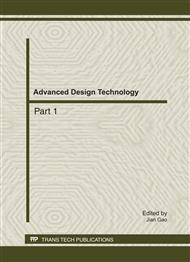[1]
I. Kopriva and A. Cichocki, "Nonlinear Band Expansion and 3D Nonnegative Tensor Factorization for Blind Decomposition of Magnetic Resonance Image of the Brain," Latent Variable Analysis and Signal Sparation, vol. 6365, pp.490-497,655, 2010.
DOI: 10.1007/978-3-642-15995-4_61
Google Scholar
[2]
M. Daszykowski and B. Walczak, "Methods for the exploratory analysis of two-dimensional chromatographic signals," Talanta, vol. 83, pp.1088-1097, Jan 30 2011.
DOI: 10.1016/j.talanta.2010.08.032
Google Scholar
[3]
I. Kopriva and A. Persin, "3D tensor-based blind multi-spectral image decomposition for tumor demarcation," Medical Imaging 2010: Image Processing, vol. 7623, pp. -1760, 2010.
DOI: 10.1117/12.839568
Google Scholar
[4]
A. Conesa, et al., "A multiway approach to data integration in systems biology based on Tucker3 and N-PLS," Chemometrics and Intelligent Laboratory Systems, vol. 104, pp.101-111, Nov 15 2010.
DOI: 10.1016/j.chemolab.2010.06.004
Google Scholar
[5]
H. J. Ding and H. B. Ji, "Application of chemometric methods to analyze the distribution and chemical fraction patterns of metals in sediment from a metropolitan river," Environmental Earth Sciences, vol. 61, pp.641-657, Aug 2010.
DOI: 10.1007/s12665-009-0379-8
Google Scholar
[6]
E. Ceulemans, et al., "Tucker3 hierarchical classes analysis," Psychometrika, vol. 68, pp.413-433, Sep 2003.
DOI: 10.1007/bf02294735
Google Scholar
[7]
X. Changqing, et al., "Soft clustering with CP matrices," in Biomedical Engineering and Informatics (BMEI), 2010 3rd International Conference on, 2010, pp.2958-2961.
Google Scholar
[8]
Z. He, et al., "Efficient method for Tucker3 model selection," Electronics Letters, vol. 45, pp.805-806, Jul 16 2009.
Google Scholar
[9]
S. Javidi, et al., "Complex Blind Source Extraction From Noisy Mixtures Using Second-Order Statistics," Circuits and Systems I: Regular Papers, IEEE Transactions on, vol. 57, pp.1404-1416, 2010.
DOI: 10.1109/tcsi.2010.2043985
Google Scholar
[10]
C. A. Andersson and R. Bro, "Improving the speed of multi-way algorithms: Part I. Tucker3," Chemometrics and Intelligent Laboratory Systems, vol. 42, pp.93-103, Aug 24 1998.
DOI: 10.1016/s0169-7439(98)00010-0
Google Scholar
[11]
R. Bro and H. A. L. Kiers, "A new efficient method for determining the number of components in PARAFAC models," Journal of Chemometrics, vol. 17, pp.274-286, May 2003.
DOI: 10.1002/cem.801
Google Scholar
[12]
A. H. Phan and A. Cichocki, "Block decomposition for very large-scale nonnegative tensor factorization," in Computational Advances in Multi-Sensor Adaptive Processing (CAMSAP), 2009 3rd IEEE International Workshop on, 2009, pp.316-319.
DOI: 10.1109/camsap.2009.5413268
Google Scholar
[13]
A. Cichocki, et al., Multi-Way Array (Tensor) Factorizations and Decompositions: John Wiley & Sons, Ltd, 2009.
Google Scholar
[14]
A. Cichocki, et al., Alternating Least Squares and Related Algorithms for NMF and SCA Problems: John Wiley & Sons, Ltd, 2009.
Google Scholar
[15]
L. Weixiang, et al., "Nonnegative tensor factorization for clustering genes with time series microarrays from different conditions: A case study," in Biomedical Engineering and Informatics (BMEI), 2010 3rd International Conference on, 2010, pp.2335-2337.
DOI: 10.1109/bmei.2010.5640581
Google Scholar


